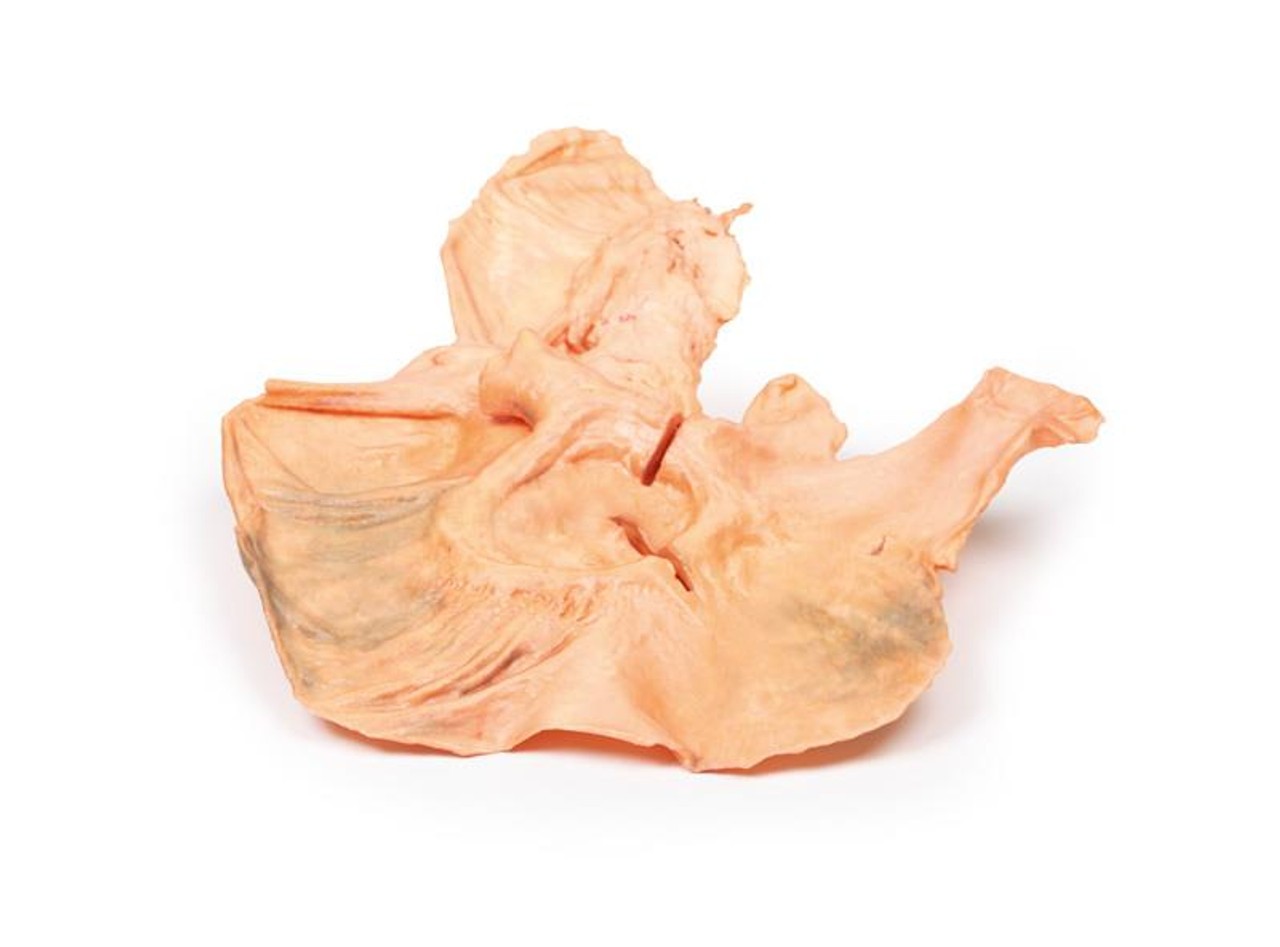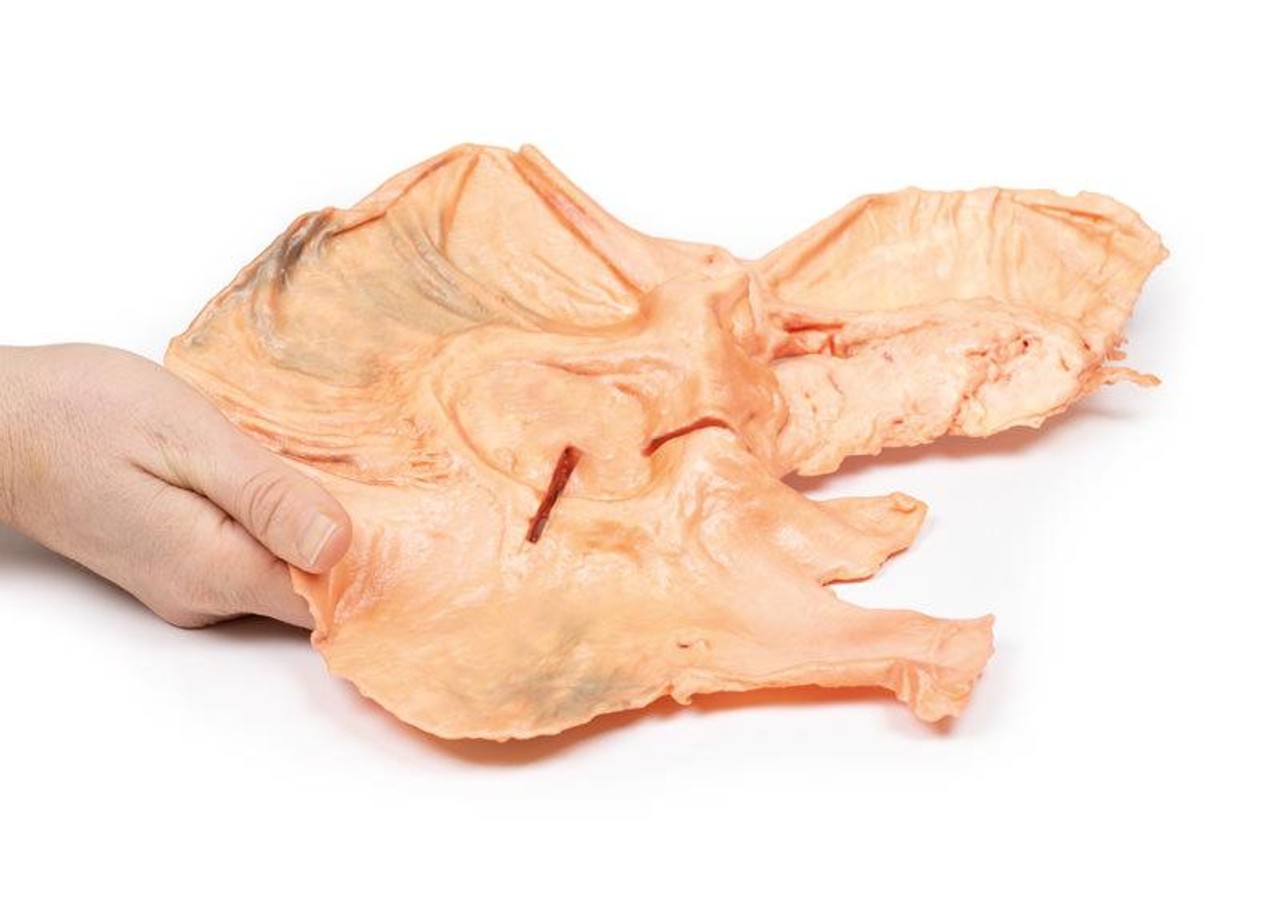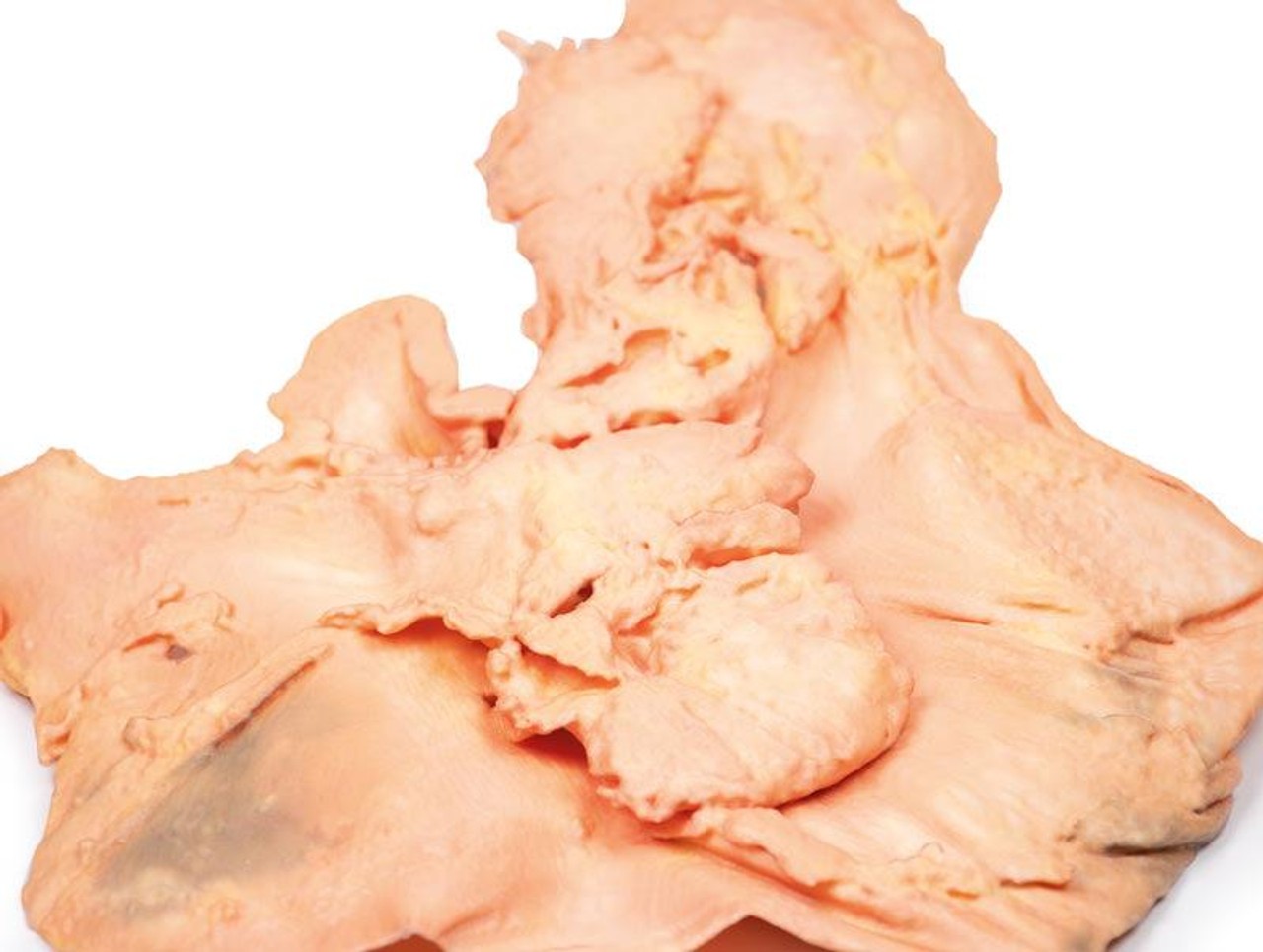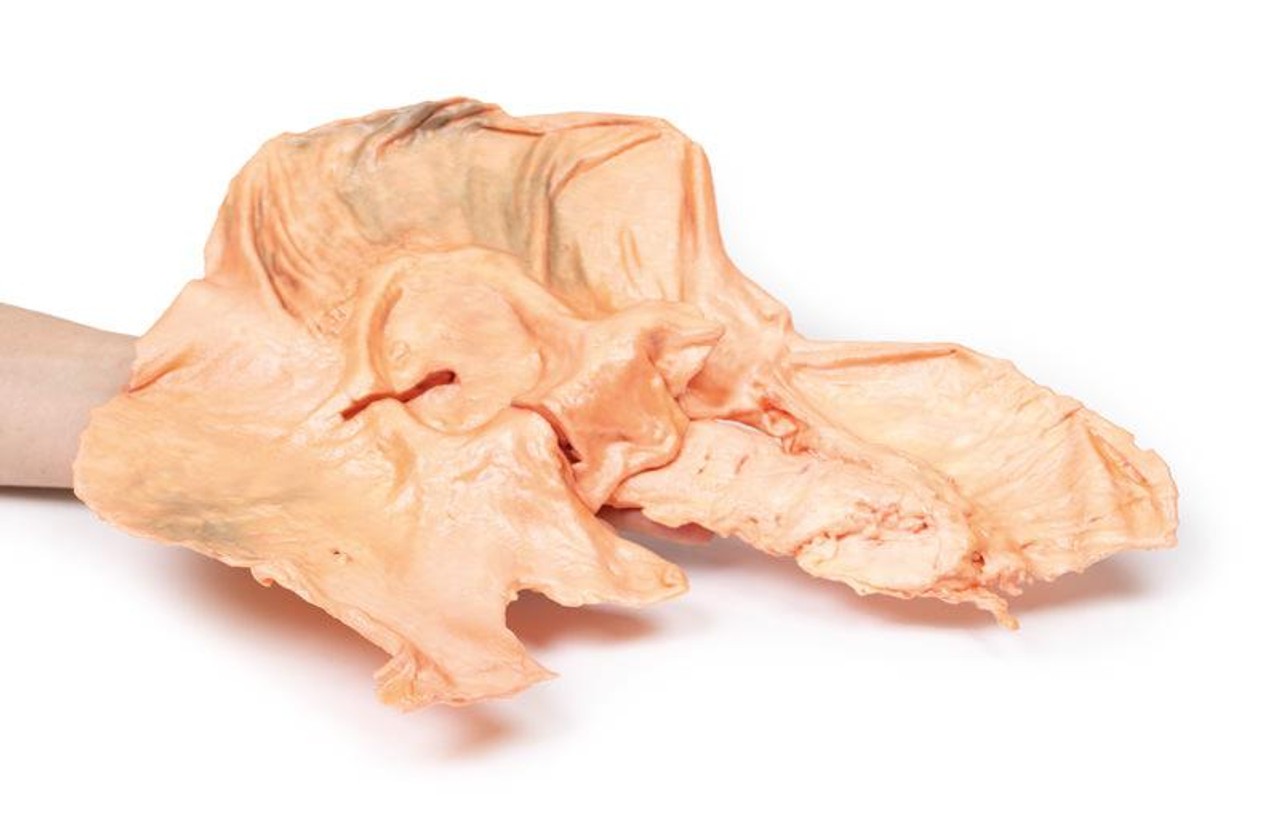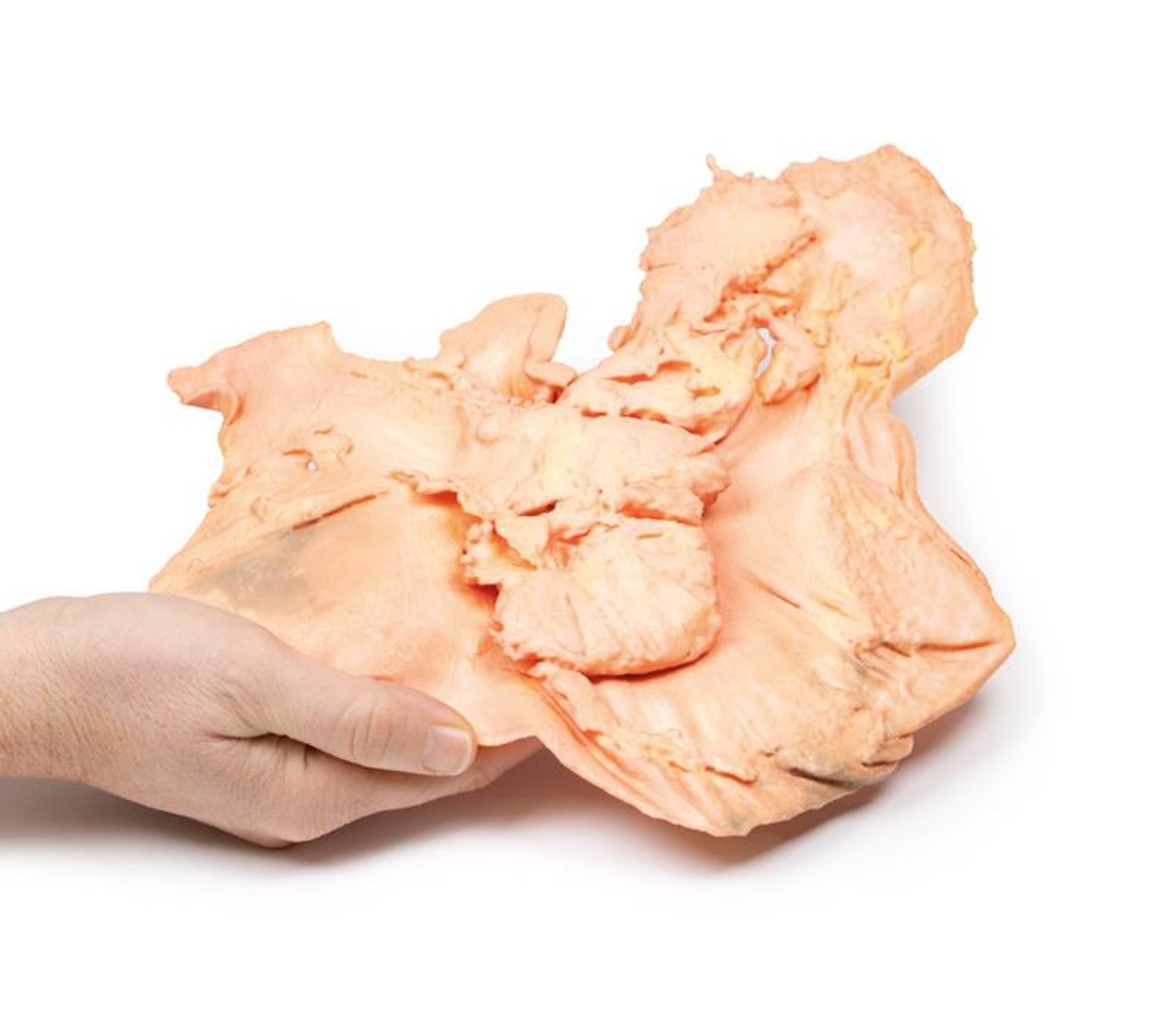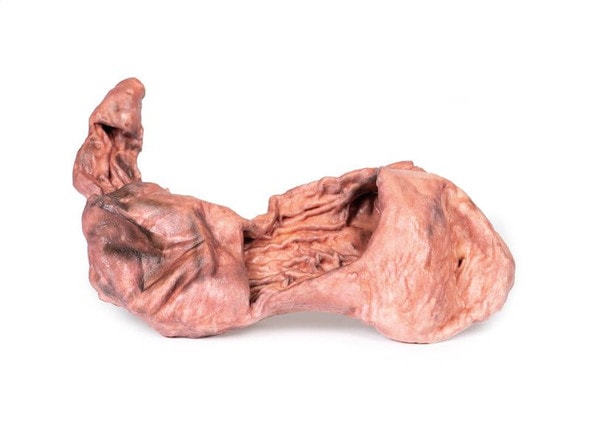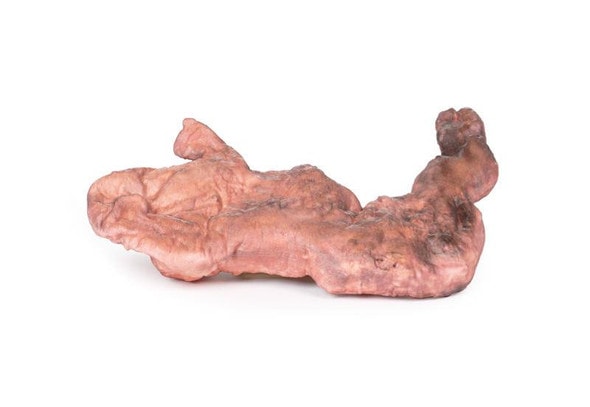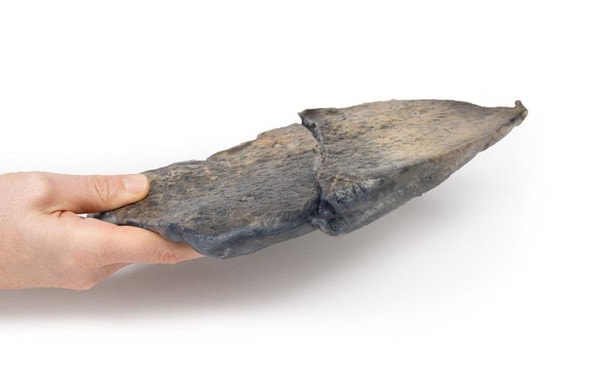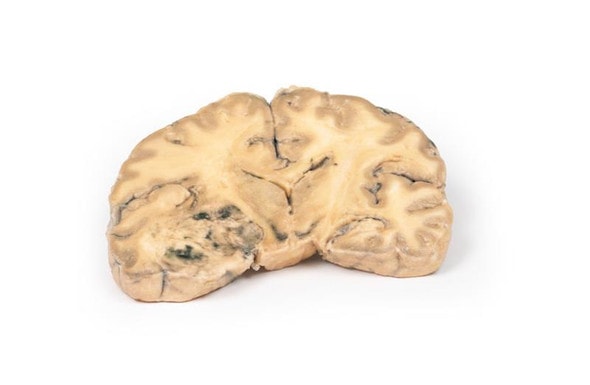Description
Developed from real patient case study specimens, the 3D printed anatomy model pathology series introduces an unmatched level of realism in human anatomy models. Each 3D printed anatomy model is a high-fidelity replica of a human cadaveric specimen, focusing on the key morbidity presentations that led to the deceasement of the patient. With advances in 3D printing materials and techniques, these stories can come to life in an ethical, consistently reproduceable, and easy to handle format. Ideal for the most advanced anatomical and pathological study, and backed by authentic case study details, students, instructors, and experts alike will discover a new level of anatomical study with the 3D printed anatomy model pathology series.
Clinical History
An 82-year old female presents with an episode of melena (dark tarry feces). She had a 6-month history of dyspepsia and nausea. Recently she had noted weight loss and early satiety. Soon after admission she had a large melena episode and died.
Pathology
This is a post mortem specimen sliced to include a sagittal view of the oesophagus, stomach, proximal duodenum and pancreas. A large 7x5cm ulcer is evident on the lesser curve of the stomach. The ulcer is shallow and broad with raised rolled edges and necrotic debris at the base. There is loss of gastric rugae radiating along the mucous from the ulcer. Dissection of the ulcer reveals elevation of the edge by pale homogenous tumor tissue. There were two eroded arteries present within the ulcer crater with evidence of recent hemorrhage. The pancreas is adherent to the serosal aspect of the ulcer. Histology taken from the lesion (sites visible as regular 3cm defects) demonstrated an ulcerating, well-differentiated adenocarcinoma of the stomach with direct invasion into the pancreas.
Further Information
Gastric adenocarcinoma is the most common malignancy of the stomach. The incidence varies widely with geography: with a much higher incidence in Japan, Chile, Eastern Europe when compared to North America, Africa, South East Asia and Northern Europe. Risk factors include smoking, high salt diets, H. Pylori infection, Gastro Esophageal Reflux Disease (GERD), atrophic gastritis and intestinal metaplasia of the gastric mucosa.
There are two distinct classifications: intestinal and diffuse gastric adenocarcinoma. Intestinal adenocarcinoma resembles glandular tissue similar to colonic or oesophageal adenocarcinoma. Intestinal types tend to be bulky: growing as either an ulcerated or exophytic tumor. Intestinal type occur most frequently in endemic areas, has a male predominance and a mean age of 55 years at presentation. Intestinal type can occur from precursor lesions, such as dysplasia and/or adenomas with dysplasia. Diffuse type gastric cancers have an infiltrative growth pattern and are composed of ‘signet ring cells i.e. cells that have large vacuoles full of mucin leading to displacement of the nucleus to the cell's periphery. The cells appear to have lost adhesion between each other, and can therefore be widely distributed within the stomach mucosa. A mass may not be appreciated in this diffuse type as a desmoplastic reaction can occur around the tumor cells, causing a thickened and rigid stomach wall with loss of rugae, creating a leather bottle appearance also know of linea plastica. Diffuse type has equal incidence across sexes and countries, and does not have precursor lesions. Germ line mutations in CDH1, which causing loss of function of E-cadherin leading to the loss of cell adhesion, can result in an increased risk of diffuse gastric cancer, which can be familial. Patients with Familial Adenomatous Polyposis (FAP) with germ line mutation in adenomatous polyposis coli (APC) gene have an increased risk in developing intestinal type gastric adenocarcinoma.
Early symptoms include dyspepsia, dysphagia and nausea. Later symptoms include weight loss, anorexia, early satiety, fatigue, anemia and hemorrhage. Treatment depends on tumor stage with surgical resection for early tumors and chemotherapy for later stage cancers.
Advantages of 3D Printed Anatomical Models
- 3D printed anatomical models are the most anatomically accurate examples of human anatomy because they are based on real human specimens.
- Avoid the ethical complications and complex handling, storage, and documentation requirements with 3D printed models when compared to human cadaveric specimens.
- 3D printed anatomy models are far less expensive than real human cadaveric specimens.
- Reproducibility and consistency allow for standardization of education and faster availability of models when you need them.
- Customization options are available for specific applications or educational needs. Enlargement, highlighting of specific anatomical structures, cutaway views, and more are just some of the customizations available.
Disadvantages of Human Cadavers
- Access to cadavers can be problematic and ethical complications are hard to avoid. Many countries cannot access cadavers for cultural and religious reasons.
- Human cadavers are costly to procure and require expensive storage facilities and dedicated staff to maintain them. Maintenance of the facility alone is costly.
- The cost to develop a cadaver lab or plastination technique is extremely high. Those funds could purchase hundreds of easy to handle, realistic 3D printed anatomical replicas.
- Wet specimens cannot be used in uncertified labs. Certification is expensive and time-consuming.
- Exposure to preservation fluids and chemicals is known to cause long-term health problems for lab workers and students. 3D printed anatomical replicas are safe to handle without any special equipment.
- Lack of reuse and reproducibility. If a dissection mistake is made, a new specimen has to be used and students have to start all over again.
Disadvantages of Plastinated Specimens
- Like real human cadaveric specimens, plastinated models are extremely expensive.
- Plastinated specimens still require real human samples and pose the same ethical issues as real human cadavers.
- The plastination process is extensive and takes months or longer to complete. 3D printed human anatomical models are available in a fraction of the time.
- Plastinated models, like human cadavers, are one of a kind and can only showcase one presentation of human anatomy.
Advanced 3D Printing Techniques for Superior Results
- Vibrant color offering with 10 million colors
- UV-curable inkjet printing
- High quality 3D printing that can create products that are delicate, extremely precise, and incredibly realistic
- To improve durability of fragile, thin, and delicate arteries, veins or vessels, a clear support material is printed in key areas. This makes the models robust so they can be handled by students easily.

